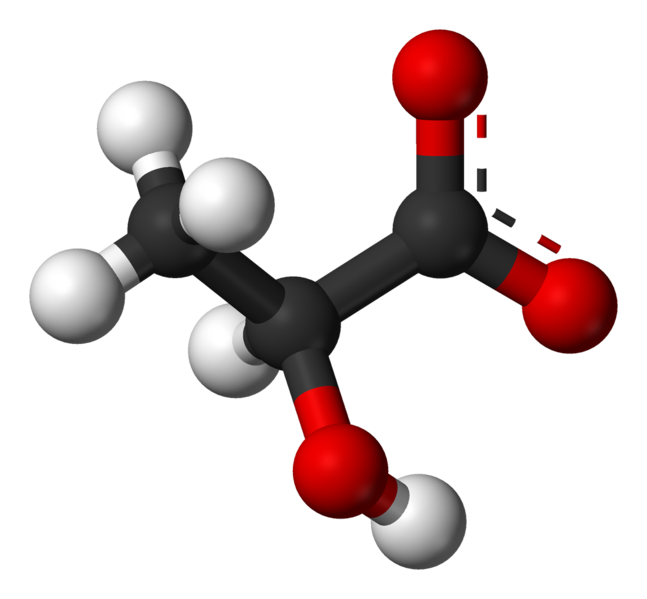This is a continuation of Energy System Need to Know: The Cardio and Fat Burning Conundrum. If you couldn’t tell, you kind of need to know some things from that article. Read it. It’s long and painful, I know. Hate me later. As a short recap, here’s the energy system breakdown alactic anaerobic: short, explosive, fresh, [...]

This is a continuation of Energy System Need to Know: The Cardio and Fat Burning Conundrum. If you couldn’t tell, you kind of need to know some things from that article. Read it. It’s long and painful, I know. Hate me later.
As a short recap, here’s the energy system breakdown
- alactic anaerobic: short, explosive, fresh, powerful
- lactic anaerobic: burning, vomiting, speaking to a holy presence
- aerobic: controlled huffing and puffing, chillin’ like a villain
(And it’s also good to know that at no point do any one of these systems “shut off.”) I don’t use these terms to sound like a smarty pants, but breaking things into overly simplistic terms is what got us into this mess, so keep that in mind. Now, onward.
The body isn’t out to burn calories
Despite what numbers on the treadmill tell you, the body’s goal isn’t to burn calories. It’s safe to say a lot of Westerners’ bodies are actually energy greedy. Energy is to humans as the ring is to Gollum—a precious resource needed for survival. If a sudden food shortage shocked the world, a six pack set of abs becomes a major liability.
For any movement, the body tries to get better at getting the job done. A lot of times, this is done by either using less energy for a given movement or workload, or also boosting production and storage of the fuel needed for the movement. This is why progressive overload is important. You have to do more, otherwise the body gets reallllyyyy efficient at what it already can do.
This isn’t always the case. Something I should have mentioned last article is that a huge new stressor tends to freak the body out to the point of releasing the hounds—letting go of its energy, being very inefficient.
“For us vertebrates, the core of the stress-response is built around the fact that your muscles are going to work like crazy. And thus, the muscles need energy, right now, in the most readily utilizable form, rather than stored away somewhere in your fat cells for some building project next spring.”
– Robert Sapolsky, Why Zebras Don’t Get Ulcers
This is a great safeguard to avoid an immediate crisis. There’s no need to worry about a food shortage and keeping energy around when your head is getting gnawed off by a grizzly bear.

Sadly, exercise induced freak outs aren’t quite as severe, and with repetition and familiarity, the body gets better. This is why distance runners have a low heart rate. You’re using less energy to do the same work. This makes a bit more sense when you realize that we generally have a maximum heart rate (the crude formula is 220 minus your age), and that everything uses a % of your maximum heart rate. If your max heart rate is 200 beats per minute (bpm), taking your resting heart rate from 70 bpm to 50 bpm is a nice little decrease in the % of max use. Less energy and effort, same result.
Given that it’s all about getting better, we have our first pass at how this all relates to sports: you have to get better at the energy system(s) you need. But, as it turns out, this is one slippery slope.
The lactic system is bunk and HIIT’s fate
We start with what is (I hope) a unique look at the energy systems. In general, when it comes to performance, you want to avoid the lactic (burning) pathway like the plague.
The other two pathways are champions compared to the lactic pathway. Sweet alactic growth makes for the best explosiveness. Sweet aerobic growth makes for the best endurance. The lactic pathway has middle child syndrome.
Using the lactic pathway, you’re never as explosive as you’d be using the alactic pathway, just as you’re never as endured as you’d be using the aerobic pathway.
Since the lactic pathway is smashed in the middle of two better pathways, it would seem that it’s a safeguard of sorts — perhaps a last ditch way to maintain an explosive bout (or as explosive of a bout as possible) using whatever means necessary. (Which has potential fat loss implications per Sapolsky’s quote; remember, though, that body composition differs from performance).
So it can be said, in a sense, that the goal is to avoid the lactic zone because, if you do that, you know you’re still working close to your explosive potential, and also working at an intensity that can be sustained for a long time.
Alas, this only sounds good. Sports and rules force us environments in which we need to deal with lactic baggage, and it’s our job to prepare for them. The question for most of us then becomes: is there potential to deal with lactic baggage?
Beginning the trouncing of HIIT…? (And CrossFit?)
This gives us two categories from the start: those that flirt with lactate, and those that don’t flirt with lactate. In my opinion, if you absolutely don’t flirt with lactate, you have little business intensely training the lactic pathway. This is something you can’t even begin to scrape away if you’re living in a world that doesn’t break apart the anaerobic bucket.
One of those worlds is CrossFit, and they show it with a passage from one of their core articles in What is Fitness? in which they say:
Basketball, football, gymnastics, boxing, track events under one mile, soccer, swimming events under 400 meters, volleyball, wrestling, and weightlifting are all sports that require the vast majority of training time spent in anaerobic activity.
When you don’t break the anaerobic bucket down, you confused alactic and lactic.
Implications . . . ?
HIIT doesn’t make you explosive
Not long ago, HIIT was crowned king of conditioning. The first problem here is that conditioning is just like any other buzz word in fitness: it has zero meaning. What’s conditioned for one sport is anything but conditioned for another sport. It’s best to zap the word from our vocabulary unless we’re talking shampoo.

HIIT stands for high intensity interval training, if you didn’t know. And it’s generally characterized by short intense activity followed by short(er) rest periods. Translation: it’s almost always lactic anaerobic, and sometimes even at a vomitgenic intensity.
HIIT took over for aerobic training a few years ago, because aerobic training was thought to decrease strength and power. HIIT wouldn’t do such a thing because it’s anaerobic, and we know that anaerobic is that there explosive bucket. Alas, we now know that there are two parts to the anaerobic bucket: the alactic and lactic. And the alactic (read: non-HIIT) part is the one responsible for absolute explosiveness.
One of the most accepted training soundbites is that you have to be fresh in order to increase power and explosiveness. This is why people often harp on long rest periods during shock training and other explosive training. This is why Olympic lifts (when done for power) aren’t to be done for 50 reps. This is known.
I hope you’re starting to see the problem emerge. If you’re using the lactic pathway, even though you’re anaerobic, you aren’t performing at a high enough % of your max ability in order to increase strength and power. This is what I usually call purgatory because you’re subjectively working at a high intensity, but you’re falling short absolutely.
Now, you might feel like you’re training at a high intensity when you’re dabbling in the lactic pathway, and you undoubtedly will be. That doesn’t mean you’re training at a high enough % of your maximum ability (absolute ability). If you have a 30” vertical (absolute ability), jumping 20” won’t boost much of anything. And if you’re in the midst of HIIT or a lactic bout of exercise, you certainly won’t be jumping close to 30″. You’re burning muscles tell me so.
If you were to measure how difficult the exercise felt, you might rate it a 10/10 though. That’s high subjective intensity. And that’s basically the lactic pathway’s life story: high subjective intensity, low(er) absolute intensity.
More telling: the truth of aerobic activation
This brings us full circle: if you don’t flirt with the lactic pathway, there’s little reason to train the lactic pathway. There’s no reason to give your body any reason to be less explosive than needed from an anaerobic standpoint.
This is where things get a little tricky because there are explosive (alactic) athletes out there that also rely heavily on the aerobic system. Training yourself to be explosive under aerobic duress is a different beast than training in the lactic zone, and the latter just won’t cut it for the former.
If I were one to cite research studies, now would be a time to mention one done by Osgnach and colleagues that showed 70% of a soccer game was performed at low(er) “aerobic” intensities. 70%! Most sprints lasted only 2-4 seconds and were followed by 90 or so seconds of low-intensity movement.
When you compare this 4:90 work-to-rest interval to common Tabata 20:10, you see just how bonkers HIIT and this lactic business is. You also see something else: the need for absolute explosive (alactic) bouts in the midst of aerobic duress.
The selective blindness
Thanks to the HIIT craze (and perhaps CrossFit — who knows) and the anaerobic blindness, we’ve somehow became numb to the idea of a lot of athletes moving around at lower aerobic intensities. But if you watch a basketball, American football, or soccer match, you’re going to see a lot of jogging. Jogging up and down the court. Jogging to and from the sideline and back to the line of scrimmage. Jogging down the field when the ball isn’t likely to be played your way. Usually, in these sports, when explosiveness is needed, it’s needed under aerobic — not lactic — conditions.
This is the nature of exercise, really. Heart rate increases linearly with exercise intensity, so an alactic bout is bound to raise the heart rate. If you’re in a sport that has you repeating a long(er) alactic bout with a short(er) rest period, you’re going to be living under some heart rate baggage.

I dare say a lot of this is intuitive. Consider throwing javelin. You have three max attempts, each of which are separated by minutes of near total rest. The movement is so short lived and the rest periods are long enough so that the heart rate isn’t much of a factor, provided you keep your emotions in check.
Now, what would happen if you prolonged the alactic bout a little bit and condensed the rest period? Say 5-6 second alactic bout and 20-40 second walking-jogging rest? You’re now looking like an American football player, and you suddenly lost the luxury of complete recovery in between bouts. Yet, for the most part, you’re still under primarily alactic and aerobic duress, not lactic.
Honestly, most everything is a soupy mess that makes even me scratch my head at times. When I was a high school coach, I regularly witnessed kids do their high jump, jog over and to their triple jump, and then jog over and run in a relay race, so it’s always important to consider the level and structure here. A sport at the professional level is different than one at the amateur level, which makes this all the more confusing, I know. There’s also difference in positions within sports. It’s not enough to say “x” sport needs “y.”
It’s also important to note that it’s not even really fair to say “x” position in “y” sport needs “z” because the game changes. Going through a two minute drill in American football could very well bring someone into the lactic zone. And let’s not forget that everyone has a different lactate threshold.
Let’s try to put it all in perspective.
The hard part isn’t getting “in shape”
In a sense, the aerobic system has play in just about every movement because the heart rate increases linearly with intensity. A lot of sprinters even train the aerobic system, but here’s where I’m going to take a stance. In my opinion, if you absolutely don’t flirt with lactate, you have little business intensely training the lactic pathway.
For the vast majority of sports, being “in shape” isn’t the hard part.
The hard part about throwing javelin isn’t being “in shape.” It’s learning how to throw the darn toothpick. Same for shot-put. Same for sprinting, even. If your skill in any of these activities is terrible, you will be terrible. Doesn’t matter what kind of “shape” you’re in.

Keep in mind that Lance Armstrong wasn’t necessarily good because he was in general shape; he was good because he was in shape for cycling. Throwing Lance into a pool wouldn’t produce a Phelps. Every skill you can think of lights up a specific pathway of movements and actions within the body (I could talk about myelin here, and it’s tough for me not to because I’m a myelin lover boy), and it’s best to develop yourself in conjunction with those demands — this is the first step. Play the sport. You have to be a gamer, not some physical specimen without application. Everything else falls underneath of this umbrella.
Once you get that down, you then look at the real demands of the sport. Not what CrossFit or HIIT zealots tell you. The real deal. Mimic that as most as possible in your training. Kudos to you if you mix in the skills you need here, too. Doing 50 consecutive snatches is nice, but that still doesn’t say you’re going to have what it takes to sustain movement in a way in which your sport demands.
After that dust is settled fill in the gaps with this:
- held back by huffing and puffing = take a slight aerobic focus
- held back by burning = take a slight lactic focus
- held back by power or explosiveness = take an alactic focus
Crude? Absolutely. But for the most part, I’m not sure you can find a more practical game plan.
Perhaps the last thing to mention is this: aerobic training doesn’t equal long distance marathon running. Anything that keeps the heart rate elevated in the “typical” aerobic range of 120-140 bpm is technically aerobically taxing.
A final note and conclusion
We’ve come a long way to get here. The length of this article (and the previous one) were sure to turn some people off, so if you made it through, you deserve a cookie or two.
People write gigantic books on this stuff, so it’s a tough task to reduce it into two blog posts. I could go further here by mentioning the difference between pinnacle capacity (ramping up to an absolute max) and prime capacity (sustaining an absolute max over time). But I think time has run short.
I’ll leave you with, perhaps, the most important less of all of this: break apart the anaerobic bucket. Once you do that, take a look at nifty cheat sheet a few paragraphs up. And make sure you read about the hard part. That’s some important stuff.
+++++
Photo credit: lactate molecule, bear, finger, neuron